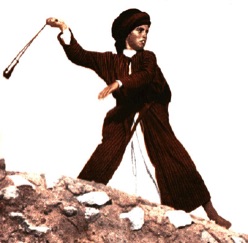
Do Not Be Bound
Together With
Unbelievers
(II Cor. 6:14)
Be Ready Always To
Give An Answer To
Everyone
(I Peter 3:15)
Commercial Free Site
No Pleas For Money
"And The Sun Stood Still"
Was A Myth, Legend
Or Fact Of History
Then Joshua spoke to the LORD on the day when the LORD turned the Amorites over to the sons of Israel, and he
said in the sight of Israel, 'Sun, stand still over Gibeon, and you, moon, over the Valley of Aijalon.' So the sun stood still,
and the moon stopped, till the nation avenged itself on its enemies.
- Joshua 10:12-13
In Joshua 10 (c. 1400 BC) the account is given of Joshua commanding the sun to stand still… for "about a full day” (v. 13). Due to the heliocentric entanglements of the event, Bible scholars have wrestled with it for years. Was it an allegorical myth (i.e., good triumphing over evil), a Jewish fable (per Philo, Gershon or Maimonides), a faulty rendering of the text, an eclipse, the earth tilting on its axis (the sun only appearing to stand still), a local phenomenon (a refraction of the
sun’s rays or the sun going behind a cloud); or was it a real, factual event, a super-
natural wonder seen throughout Canaan and, as we’ll see, witnessed and recorded all
over the world?
If Joshua's long day occurred as the Bible says, not one or two miracles would
have taken place, but many simultaneously, e.g., to prevent the non-orbiting moon
from falling to the earth, keeping the oceans from rolling over the continents, averting
massive earthquakes and 1,000 mile-per-hour winds at the equator, and other such
calamities. Without Divine intervention, such devastating blows would have left little life
on the earth.
Considering the scope and breadth of these complications, Jehovah may not
have been up to the task, whisper some among us.
Assuming Joshua 10 is literal history, there would certainly be no shortage of
evidence documenting it; an ancient wonder of this magnitude would not have escaped
the pen of the historian and poet. Not surprisingly, such records do exist, and they are
many. Accounts going back thousand of years tell of a once 'long day.' In fact, they
appear in the Eastern Hemisphere as a long day and in the Western Hemisphere a long night, just as we would expect. In the Fiji Islands in the South Pacific, a once ‘long sunset’ is called to mind and celebrated each year. (The video below will show that if it was daytime in Canaan and nighttime in the Western Hemisphere, the sun would have been near setting in the Fiji Islands.)
(Note: Myths and legends must never be discounted, nearly all of them contain kernels of historical truth. Although
they become corrupted, exaggerated or perhaps locally embellished over time, many of the kernels remain intact,
e.g., the Creation and Flood legends.) 1
Herodotus, Homer, Josephus, the Incas, Aztecs and American Indians are just some of the ancient peoples who tell of a once long day or long night. In almost every case, the sun and/or moon stopped and remained fixed in the heavens.
But first, a quick summary of events leading up to the long day.
After the death of Moses, Joshua took command of the Hebrew nation, crossed the Jordan River (on dry ground during flood season, the first of four notable miracles preceding the long day - Joshua 3, 4, 6 & 7) and fought against the idolatrous Canaanites. The cunning Gibeonites, kin to the sun-worshipping Amorites (giants - Amos 2:9), wasted no time forging an unholy alliance with Israel.
Under Israel’s protection, the Gibeonites, having learned of an approaching army by five Amorite kings, sent word to Joshua
beseeching his aid. Joshua obliged (because of the alliance) and Jehovah assured him of the victory:
So Joshua marched up from Gilgal with his entire army, including all the
best fighting men. The Lord said to Joshua, "Do not be afraid of them; I have given
them into your hand. Not one of them will be able to withstand you." After an
all-night march from Gilgal, Joshua took them by surprise. The Lord threw them
into confusion before Israel, so Joshua and the Israelites defeated them
completely at Gibeon. Israel pursued them along the road going up to Beth Horon
and cut them down all the way to Azekah and Makkedah. As they fled before
Israel on the road down from Beth Horon to Azekah, the Lord hurled large
hailstones down on them, and more of them died from the hail than were killed by
the swords of the Israelites. On the day the Lord gave the Amorites over to
Israel, Joshua said to the Lord in the presence of Israel: "Sun, stand still over
Gibeon, and you, moon, over the Valley of Aijalon." So the sun stood still, and the moon stopped, till the nation avenged itself on its enemies, as it is written in the the Book of Jashar. The sun stopped in the middle of the sky and delayed going down about a full day. There has never been a day like it before or since, a day when the Lord listened to the voice of a man. Surely the Lord was fighting for Israel! - Joshua 10: 7-14
The Book of Jasher (noted above) reads similarly:
And when they were smiting, the day was declining toward evening, and Joshua
said in the sight of all the people, "Sun, stand thou still upon Gibeon, and thou moon in the
valley of Aijalon, until the nation shall have revenged itself upon its enemies." And the Lord
hearkened to the voice of Joshua, and the sun stood still in the midst of the heavens, and
it stood still six and thirty moments, and the moon also stood still and hastened not to go
down a whole day. And there was no day like that, before it or after it, that the Lord
hearkened to the voice of a man, for the Lord fought for Israel.
- Jasher 88: 63-65
Parry & Co, Pub. 1887
The fact that: 1) The Old Testament cites the Book of Jasher, 2) Jasher agrees with
the Book of Joshua 3) and the Hebrew nation accepted Jasher, gives Jasher 88
significant credibility.
(Note: The original Book of Jasher is lost. The copies we have today are likely
forgeries, and thus defective. Moreover, Jasher was never accepted by Israel as divinely
inspired [as far as we know], but was generally viewed as historical. However, as noted above, myths and legends often contain kernels of historical truth, and this may be true of Jasher. Since Jasher 88 is so closely aligned with Joshua 10, it has been included here. One thing we cannot say is: “Jasher 88 is unreliable,” because we don’t know, we don’t have the original. In other words, the argument cuts both ways.)
Another near equivalent to Joshua 10 is found in the writings of Flavius Josephus, a 1st Century Jewish historian living in and around Jerusalem after the time of Christ. He writes:
... Joshua made haste with his whole army to assist them: and marching day and night, in the
morning he fell upon the enemies, as they were going up to the siege: and when he had discomfited
them, he followed them, and pursued them down the descent of the hills: the place is called Beth
horon. Where he also understood that God assisted him: which he declared by thunder and thunder-
bolts; as also by the falling of hail larger than usual. Moreover it happened that the day was lengthen-
ed; that the night might not come on too soon, and be an obstruction to the zeal of the Hebrews in
pursuing their enemies. Insomuch that Joshua took the Kings, which were hidden in a certain cave at
Makkedah, and put them to death. Now that the day was lengthened at this time, and was longer than
ordinary, is expressed in the Books laid up in the temple.
- Antiquities of the Jews
Book V. chap.1, 17.
Modern detractors might quibble that Josephus was a Jew and would naturally accept as true the
Hebrew scriptures (i.e., ”the Books laid up in the temple”). However, Josephus was a historian of some
standing, so much that he was commissioned under Flavian patronage in AD 94 to compile a History of
the Jews for the official archives. The Flavian Emperors would have had little patience with a careless,
slipshod historian. Josephus, Joshua and Jasher all agree, Joshua's Long Day was a literal event.
Listed below are more evidences for Joshua's Long Day:
In the Homeric Hymns to Athens, c. 100 BC-150 AD, it is said that "the sun stopped far a long
while." 2
In The Cults of the Greek States, c. 700-480 BC, "the sun stopping in its course," is recorded.3
In Plato's Timaeus, c. 360 BC, Critias tells of an Egyptian priest recalling heavenly bodies failing in
the distant past:
“There have been, and will be again, many destructions of mankind arising out of many causes;
the greatest have been brought about by the agencies of fire and water… There is a story that even
you (Greeks) have preserved, that once upon a time, Phaethon, the son of Helios, having yoked the
steeds in his father's chariot, because he was not able to drive them in the path of his father, burnt up
all that was upon the earth, and was himself destroyed by a thunderbolt. Now this has the form of a
myth, but really signifies a declination of the bodies moving in the heavens around the earth…”
Russian-American author and catastrophist, Immanuel Velikovsky, while perusing this legend,
opined: “In the section, Phaethon, we wondered how the Roman poet Ovid could have known of the…
interrupted movement of the sun… unless such a catastrophe had actually occurred. The same
reasoning applies to the Indians. The story of snaring the sun or attacking the sun is told in many
variants…” 4
Herodotus, c. 484–420 BC, while visiting Egypt also, noticed that when the temple priests were show-
ing him their archives, he noticed a record of a day twice as long as any day recorded.5
In another Egyptian legend, recorded by Fernand Crombette, French scholar and translator of
numerous Egyptian hieroglyphics, a number of natural calamities are described, one of which a Royal
Decree is issued exempting a number of subjects from taxation, who were victims of a great flood from an
extraordinarily high tide [perhaps due to the concentrated gravity of the suspended moon?]:
The sun, thrown into confusion, had remained low on the horizon, and by not rising had spread terror
amongst the great doctors. Two days had been rolled into one. The morning was lengthened to one-and-a-
half times the normal period of daylight. A certain time after this divine phenomenon, the master had an
image built to keep further misfortune from the country... In a small angle on the edge of the horizon, the sun
itself, which had just risen at the spot where the moon was going, instead of crossing the sky stayed where
it was. Whilst the moon, following a narrow path, reduced its speed and climbed slowly, the sun stopped
moving and its intensity of light was reduced to the brightness at daybreak… The waves formed a wall of
water… the tide, which had risen high, overflowed into the plains.6
In the Old Testament, the prophet Habakkuk also spoke of a time when the “sun and moon stood still in
the heavens” (Habakkuk 3:11). The passage seems to infer Israel’s victory over the Amorites, the execution of their aforementioned
king and metaphorically describing the nearby flood in Egypt:
Torrents of water swept by; the deep roared and lifted its waves on high. Sun and moon stood still in the heavens, at
the glint of your flying arrows, at the lightning of your flashing spear. In wrath you strode through the earth and in anger you
threshed the nations. You came out to deliver your people, to save your anointed one. You crushed the leader of the land of wickedness, you stripped him from head to foot. With his own spear you pierced his head when his warriors stormed out to
scatter us, gloating as though about to devour the wretched who were in hiding. You trampled the sea with your horses,
churning the great waters.- Habakkuk 3:10-15
That some of these ‘nuggets of truth’ might be coincidental we certainly concede, but not all of them; there are too many. Besides, in the Western Hemisphere we see legends of a "long night," as shown below.
Soon after Christopher Columbus anchored in the new world, Franciscan friar, Bernadine de Sahagun, began gathering and collating a number of local Indian legends, one of which tells of a time when "the sun rose only above the horizon and remained there without moving; the moon also stood still."7
The Ojibway Indians recall a 'long night with no light.’8
French Jesuit missionary, Paul Le Jeune, reports a ‘long night’ told by the Wyandot
Indians.9
An Aztec inscription dating from around 1400 BC (the same time as Joshua 10)
reads: "The sun did not rise for a whole day in the city of the gods.”10
Another Aztec legend tells of a time when the sun would not rise, so a human
sacrifice was offered so that "once again the world might have a sun..."11
The Omahas have a legend that, “once the sun was caught in a trap by a rabbit and
released just before sunrise.12
In the Canadian Lake Winnipeg region, the Bungee
Indians tell of a 'long night.’13
In the Mexican Annals of Cuauhtitlan there is a record
of 'one of the nights not ending for a long time.’14
The Popol Vuh, the national book of the Mayan
Quinche Indians of Guatamala, recalls the following:
They did not sleep; they remained standing and great was the anxiety of their hearts and
their stomachs for the coming of the dawn and the day... "Oh if we only could see the rising of
the sun! What shall we do now?" ...They talked, but they could not calm their hearts which
were anxious for the coming of the dawn.15
In Peru, Spanish priest and explorer, Fernando de Montesinos, cites a time when 'the sun hid for
some 20 hours because of sin in the land.' This purportedly took place around 1400 BC (around the time
as Joshua) during the third year of Chief Titu Yupan-qui Pachacuti II's reign. (The Lost Realms, by Z.
Stichin; Avon Books, Ch. 7 [see notes])
In the Fiji Islands in the South Pacific, an annual commemoration of a 'Long Sunset' is observed. Anthropologist Sir James Frazier records that on a particular Island hillside each year the natives tie weeds together "to stop the sun from going down," as they say it once did.
The coincidental locations of these legends⎯in both Hemispheres⎯have generated considerable interest among historians and apologists. One YouTube video in particular shows that when a day/night overlay is placed on a world map, and the left edge of the night section is placed at the Fiji Islands (where the ‘long sunset’ is said to have taken place), the night section covers the 'long night' locations in the Western hemisphere and the day section covers the 'long day' locations in the Eastern Hemisphere, which is what we would expect if Joshua 10 is literal. In other words, the legends are not random or local, but fixed and predetermined. Watch it yourself below:
The evidence is clear. That some of the ancient legends tell of a long day and others a long night indicate that Joshua’s Long Day was not a single event originating in the Middle-East and then spreading throughout the rest of the world. Else, all the accounts would tell of a long day but none of a long night (to say nothing of a 'long sunset'). This is a strong indication that Joshua’s Long Day was a real, historical event, not a myth, legend or fiction. source (see Chap. 5, note 40)
In closing, allegations are sometimes raised against Joshua’s Long Day as to why Israel’s victory over the Amorites would call for such a series of requisite miracles? There are possibly 2, maybe 3, answers.
First, Israel was God's chosen people. The Hebrews worshipped Yahweh, the one true God, while the Amorites worshipped the sun and moon.16 The sun and moon standing fixed in the heavens under Joshua's command would have thrown the Amorites and their neighbors into such a petrifying state that it would have riveted in their minds the awful truth that Yahweh alone is God.
The Gibeonites, on the other hand, lived in peace with Israel from that day on, never forgetting that terrible day; they were ultimately absorbed into the Hebrew nation. In fact, they were among the returning Jews from Babylon who rebuilt the walls of Jerusalem after the exile, 900 years later (Nehemiah 3:7).
Secondly, the Amorites practiced male and female prostitution and child sacrifice (much as we do in America). Such monstrosities and wickedness demanded their utter destruction. Otherwise, in time these monstrosities would have corrupted Israel (the tribe of Judah in particular) to such an extent that it would have been beyond the bounds of possibility that the Messiah would appear. Perhaps this is why “the Lord was surely fighting for Israel.” In an excellent book written by George Faull: ‘The Eternal Struggle, From Genesis To Revelation,’ Bro. Faull expounds the never-ending struggle between God and Satan to circumvent the Incarnation and mission of our Lord.
And finally, of particular interest is the name Joshua, which Moses derived from Hoshea in Numbers 13:16. It means God is Savior, or God is Salvation. A more comprehensive form of Joshua is Jehoshua, or Jeshua, which in the Greek means 'Jesus' (as in Acts 7:45 & Heb. 4:8 KJV).17 Also, as author and homilist Patrick Henry Reardon (Antiochian Orthodox) articulates, Moses prefixed Hoshea with the first syllable of the Sacred Tetragrammaton—YAHWEH—rendering it YAH-shea, or Jo-shua.18
What else can this mean but that Joshua was a shadow of Jesus Christ, the Creator and Lord of the sun and moon, and the Redeemer of mankind. Such gems were certainly not lost on the thousands of remnant Jews that were ushered into Christ’s kingdom in the church's earliest days.
During a creation/evolution debate some time back, Creationist Kent Hovind told a story about an atheist astronomer from Russia coming to speak at one of our universities. As he approached the podium and looked out at the audience, he made a shocking statement none of them will ever forget. He began his speech with these sobering words:
Folks, either there is a god or there isn't. Both possibilities are frightening. If there is no god, we are in trouble,
because we are hurdling through space at 66,000 miles an hour and nobody is in charge. If there is a god, we better find
out who he is, what he wants and do what he says.19
No wiser words were ever spoken by mortal man outside the Bible. “Finding out who he is, what he wants and doing what he says,” is the heart of the Gospel.
There is a God, He does exist and He sent His Son to die for our sins. Our Savior professed He was “from God” (John 6:46), yet claimed He was “One with God” (John 10:30), and proved it by the things He did (v. 38). The pre-incarnate Jesus (Joshua) was the One Who stopped the sun and moon 3,000 years ago. He is the "Sun of righteousness... with healing in His wings" (Mal. 4:2), and the only One Who can "give light to those who sit in darkness and the shadow of death" (Luke 1:79). On that awful Day of Judgment no one will misapprehend Who He is or why He’s there. He will either be our Sweet Savior or Awful Judge. There’s no other option.
To be saved from your sins you must:
- Believe in the Lord Jesus Christ (John 8:24; Acts 16:31)
- Repent of your sins (Mat. 3:2; Luke 13:3-5)
- Confess Jesus publicly (Mat. 10:32-33; Romans 10:9-10)
- Be immersed (baptized) into Christ for the remission of your sins and the gift of the Holy
Spirit (Acts 2:38; Matt. 28:18-20)
- Live faithfully until death (Rev. 2:10; James 1:12)
Your obedience to the Gospel is the most important decision you will ever make, and
will determine where you spend eternity.
His Name Is Yahweh Of Hosts—The Holy One
Of Israel Is Your Redeemer; He Is Called The God
Of All The Earth.
- Isaiah 54:5
Endnotes
1. Legend vs. Myth, Diffen https://www.diffen.com/difference/ Legend_vs_Myth
2. Hesiod's volume, the Loeb Classical Library (quoted in Velikovsky, Worlds In Collision, p. 169)
3. Farnell, I, 281 (quoted in Velikovsky, p. 169)
4. Quoted in Velikovsky, p. 311
5. World's Bible Handbook, Boyd, p.122
6. Cercle Scientifique et Historique, France and Belgium (from Crombette’s three volumes of Verdique Historique de l’Egypte Antique)
https://www.geocentricity.com/astronomy_of_bible/jld/
7. Historia general de las cosas de Nuera Espana (new edition, French trans.), p. 481 (quoted in Velikovsky, pp. 45 & 46)
8. Sun Lore of all Ages: A Collection of Myths and Legends Concerning the Sun and its Worship, Olcott, p. 212
9. Ibid, p. 215
10. Creation Moments (radio spot), Taylor, Vol. 19
11. The Religion of the Aztecs, Caso, pp. 15-16
12. Olcott, p. 217
13. Ibid, p. 218
14. Codex Chimalpopoca
15. Popul Vuh, The Sacred Book of the Quiche Maya, Goetz, Part III, Chapters 4-7, pp. 172-190
16. Wycliff Bible Dictionary, p.1144; The Bible Has The Answer, p.72; New World Encyclopedia
17. Old Testament History, College Press; p. 303 (at footnote)
18. Joshua, Jesus and Yeshua: Power In The Name, Patrick Henry Reardon https://preachersinstitute.com/2013/08/13/joshua-jesus-and-yeshua-power-in-the-name/
19. Shaw Local News Network, Quote by Kent Hovind https://www.shawlocal.com/2013/03/15/my-response-to-everything/ak59io5/
Much of this article was gleaned from two on-line essays:
Joshua’s Long Day (no author cited).
https://www.geocentricity.com/astronomy_of_bible/jld/
and
Introduction to Biblical Cosmology, by Gerardus D. Bouw, Ph.D.
Joshua's Long Day
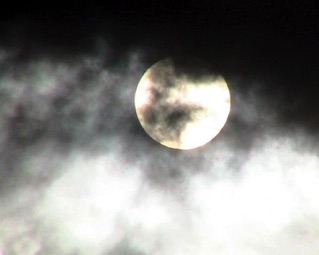
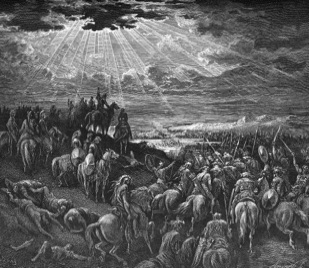
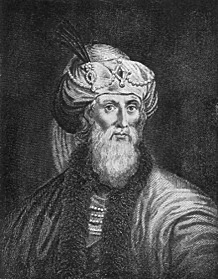
Flavius Josephus
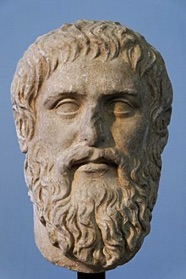
Bust of Plato
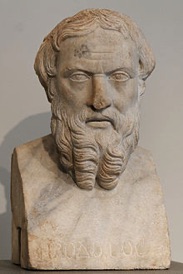
Bust of Herodotus
Wyandot Indians
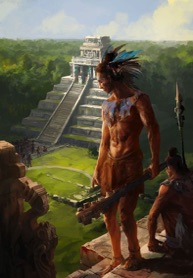
Maya Indian
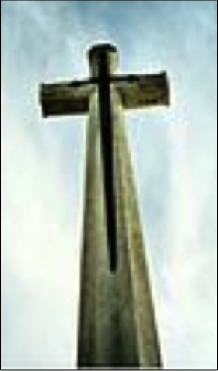
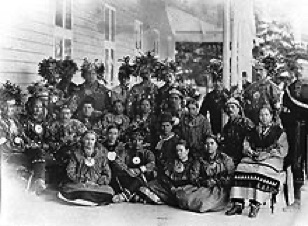
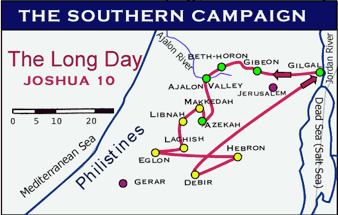
Testimonies Of A Long Day And Long Night From
Around The World


